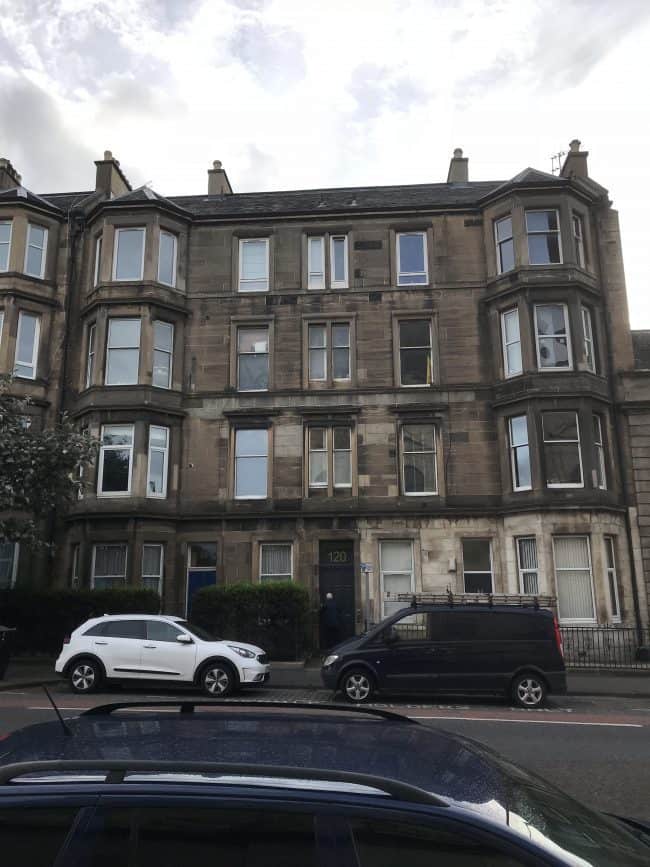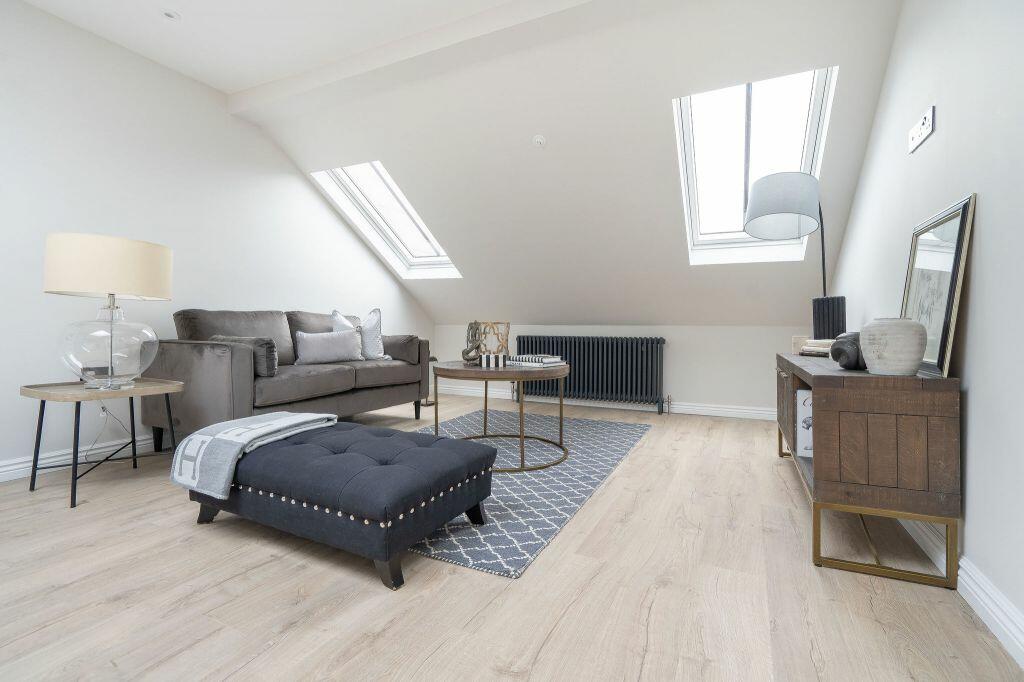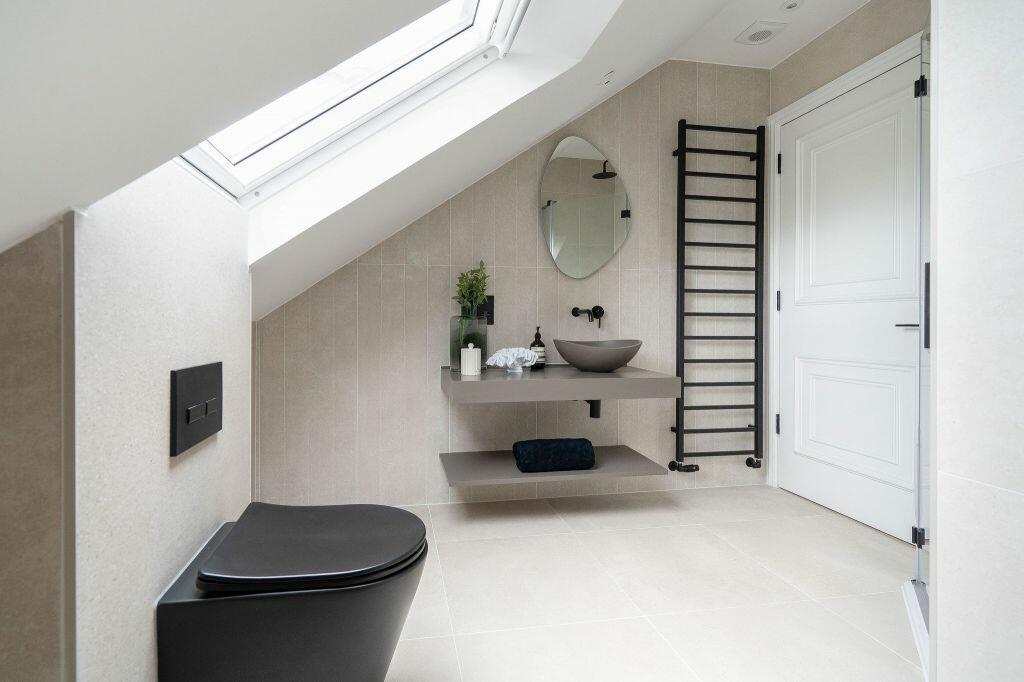Edinburgh Tenement Loft Conversion
A Tenement loft conversion in Edinburgh can be a great way to “extend” your flat and head up the way into the roof space…. simple, right?
Maybe not simple but most likely doable.
Whilst a Loft Conversion is a Loft Conversion there is something special, unique even about a loft conversion in an Edinburgh Tenement.
If you have just moved into your flat or have been thinking about this for a while you probably have quite a lot of questions you need answers to.
For example:
- How do I know if it is even possible?
- Is it Legal?
- What specifically do I need to know?
- How much extra room can I get?
- What Permission do I need?
- How much will an Edinburgh Tenement Loft Conversion cost?
- Will it be worth it financially?
These questions are probably ringing a few bells if you are currently thinking of a tenement loft conversion.
You will want to know the answer to these BEFORE you start designing your dream Loft conversion.
Let’s start at the beginning…. first things first

Is a Loft Conversion Possible? Edinburgh tenement
How do I know if it’s possible to convert my Edinburgh Tenement Loft?
Edinburgh Tenement loft conversion basics
If you are at the very beginning of the process, it is a good idea to do your homework and find out as much information as possible.
This is the information-gathering stage!
The very first thing to do is to work out if it’s practical or economically viable to do the tenement loft conversion.
There are a few basic but critical things to consider.
1. Is there somewhere in the flat to put a staircase?
2. Will I be able to achieve a minimum of 2.0m head height at the bottom of the stair, all the way up the stair, and at the top of the stair?
3. Is there enough head height in the Loft?
Once you have the answer to these basic questions you will be in a better position to know if your Edinburgh tenement Loft conversion is possible.
At John Webster Architecture we have done lots of Loft Conversions and offer a FEASIBILITY VISIT to assess if your flat may be a candidate for a loft conversion.
We will be able to tell you right at the very beginning of your journey if it’s possible or not (it is not always possible).
This can potentially save you ££££££’s by hiring an Architect in Edinburgh to produce expensive design drawings or hiring an Engineer when it may not be possible to convert your loft.
Get in touch with us john@jwarch.co.uk
Find out the answer to these questions BEFORE you are committed to the project.
Is there somewhere in the flat to put a staircase?
It might seem very straightforward but it’s often the single most challenging aspect of a Loft Conversion…Where to put the stairs!
A staircase can often take up more space than you imagine.
Especially when you have quite a height to climb, most Tenement flats in Edinburgh have a floor-to-ceiling height in excess of 3.0m, you also need to take into account the finished floor level of the new tenement Loft Conversion, this might take you up to 3.5m….so, quite a lot of stairs.
Compare this to a newly built house which has a floor-to-floor height of around 2.65m. Quite a difference.
In most cases, a trademark of Edinburgh tenements is the box room.
This is an inner room that can sometimes be used to Locate the new stairs albeit with some modifications.
Another option is to use existing cupboards (this storage space can often be replaced within the new attic space)
An important point to consider is the stair needs to be located in a position that suits the existing flat layout but also needs to enter the new attic space in a location that makes sense.
IMPORTANT: Avoid locating the new stairs in an obscure location such as the kitchen (we have seen this done) it not only makes little sense and looks awful but it’s likely to put future buyers off with such an unorthodox layout.
Put yourself in a buyer’s shoes.
What would you expect to see if you were visiting your flat for the first time?
Will I be able to achieve a minimum of 2.0m head height at the bottom of the stair, all the way up the stair and at the top of the stair?
Now that you have found the perfect location for your staircase you need to make sure that the head height is ok.
You need a minimum of 2.0m at the bottom, all the way up, and on the top landing.
In reality, you want more than 2.0m for comfort, especially if you are tall😊
Strangely enough in Scotland, the head height only applies to stairs the rooms don’t have to be 2.0m.

OAK STAIR
Is there enough head height in the Loft?
Sometimes it’s difficult to know how much you need, ideally a minimum of 2.3m head height.
Why 2.3m?
Well, take into account that the head height will be further reduced to allow for insulation and any structural modifications.
The floor will also be built up slightly by around 34/40mm.
The basics:
Stair Location
Stair Head height
Loft head height
Schedule a Conversation Today!
Is it Legal?
Is Converting your Edinburgh Tenement Loft lawful?
This is something that you might be wondering about.
So, who owns the roof space?
Tc Young Solicitors have written an article about this which states.
(except below credited to TC Young Solicitors)
Ownership
The key starting point when seeking to determine ownership of the “common parts” of a tenement will be to consult the title deeds for all flats within the block. If the titles expressly set out the ownership of the common parts, including the attic space and roof, then that position will prevail. If, however, the titles provisions are contradictory or lacking in detail the position as set out within the Tenement Management Scheme of the 2004 Act (TMS) will “step in” to fill in any gaps where the titles are deficient.
Where title deeds do not specify who owns the attic space or roof of a tenement, these will fall within the ownership of the top floor proprietor. This was the position historically under the common law and it remains the same under the 2004 Act.
Tenement Management scheme link below:
https://www.mygov.scot/common-area-repairs/tenement-management-scheme/
Link to TC Young article below:
https://www.tcyoung.co.uk/blog/2014/private-landlord/who-legally-owns-the-attic-space-in-scottish-tenements
Further reading by Purdies Solicitors below:
https://www.purdiesolicitors.co.uk/news/extending-into-roof-spaces-in-traditional-tenements-can-it-be-done-by-struan-douglas/
Before you start it’s a good idea to seek clarity on your specific case with your own Solicitor…this is something you want to know right at the start so there are no nasty surprises later on.
From experience, we know that you will need to allow access to the roof for future maintenance.
There will likely be a communal hatch in the close allowing access to the tenement Loft space.
Again from experience, this is likely to be a tiny door in a fairly inaccessible position….i know I’ve crawled through lots of these!
A new access door will probably be required and a new hatch out onto the roof will also be needed too.
This is common sense and access to the roof can generally be made better and safer.
What specifically do I need to know?
Things Edinburgh Architects should know:
What makes an Edinburgh Tenement Loft conversion Unique?
A loft conversion is a Loft Conversion..right?
Yes and no.
There are some features and regulations that are common in all loft conversions but there are some things unique to a tenement loft conversion.
Apart from the stunning views at this height there are some things to be mindful of when converting a loft in a tenement.
Number 1
Fire suppression:
As well as smoke alarms, heat detectors, and carbon monoxide detectors a fire suppression system will also be required.
Building standards 2.15 Automatic fire suppression systems, mean a domestic high-rise building greater than 18m will need a fire suppression system…this means that most Edinburgh Tenement Loft Conversions will need one.
(this is something most Edinburgh Architects should know)

FIRE RESISTANCE
Number 2
Fire resistance
Post Grenfell this is something that has been in the spotlight, rightly so.
While an Edinburgh Tenement is neither a tower block nor has cladding it’s still a high-rise domestic building.
Fire doors will be required to give fire protection for all doors within the existing flat.
A protected enclosure is required from the Attic rooms all the way to the main exit out of the flat.
This will give you and your family time to escape from a fire.
https://www.gov.scot/publications/building-standards-technical-handbook-2019-domestic/
All of this just makes sense when you think that lives could be saved.
While these measures do not eliminate the risk they do lower it significantly allowing you to go to sleep knowing that you and your family are safe…you cant put a price on this.
Thought also needs to be given to the practical side of building at this height.
The contractors will need to be aware of the regulations for working at height.
You can read all about the Work at Height Regulations 2005 below.
http://www.legislation.gov.uk/uksi/2005/735/contents/made
Scaffolding will be required to allow access and to get materials etc. up to the top floor.
Access to delivering materials also needs thought.
It’s a good idea to think all of this through and come up with a plan in conjunction with your Architect and Builder.
Contact us about your Tenement Loft Conversion
How much extra room can I get?
How much extra room can you get from your Edinburgh Tenement Loft conversion?
It’s not out of the question to have 2 extra bedrooms and a bathroom.
But the answer to this question depends on what you want to get out of it and what is driving it.
Are you doing a loft conversion for you and your family maybe with 1 eye on the investment potential or is this solely for an investment?
(Btw)..Tenement Loft conversions can make great investments.
Here are some ideas:
• 2 bedrooms and 2 bathrooms
• 3 bedrooms and 1 bathroom
• 1 master suite with a seating area and large En-suite
Keep in mind that although the footprint of the Loft space is generally the same as the existing flat layout all of that space is not useable due to the slop on the roofs.
This is sometimes difficult to imagine.
At john Webster Architecture we work with our clients to design the best project for them.
We do all this in 3-D which really helps you understand how the design works.
It’s an awesome tool.
On a side note, it’s useful to know that you can install a 600mm wide stair if this is only serving 1 bedroom and a bathroom (a 600mm staircase is quite petite and can be squeezed into a smaller space than a regular 900mm wide stair).
If the stair is serving more than 1 bedroom then a regular 900mm wide staircase is required.
Contact us about your Tenement Loft Conversion
Do I need Planning Permission for an Edinburgh tenement Loft conversion?
Planning approval
Will I need Planning approval for my Tenement Loft conversion?
Maybe!
This will depend on whether you are planning on adding a Dormer or just adding Velux windows.
You can read all about Dormer Loft conversions versus Velux Loft Conversions Here
If your property is within a conservation area you will need planning approval.
If your property is a Listed building you will require planning approval and Listed Building Consent
Find out if your City of Edinburgh property is listed Here
At John Webster Architecture we find this out for you.
If you are constructing a Dormer or altering the roof line in any way you will need Planning approval

Do I need a Building warrant for an Edinburgh Tenement loft conversion?
Building warrant
You will definitely require a Building warrant Whether you require Planning Approval or not.
This is a given, all loft conversion projects require a building warrant.
These are technical drawings that get submitted as part of the Building warrant application submission.
As well as Architects drawings a structural Engineers input is always required for a Loft conversion.
Find out here why you need a Structural Engineer
Once the City of Edinburgh Council is satisfied it has all the information that it requires about your Tenement Loft conversion it will issue the Building warrant.
This Warrant is valid for 3 years from the date of issue;
A Building warrant fee is payable to the City of Edinburgh Council, this fee is directly related to the cost of the building work.
Find out Here how much a Building warrant might cost for an Edinburgh Tenement Loft Conversion.
TOP TIP: if you are thinking about a Loft Conversion, do it early.
It can take 6 months to a year to obtain all the necessary permissions.
Once you have your building Warrant it’s time to start thinking about building, but here is the 6 Million Dollar Question.
How much does it cost for an Edinburgh Tenement Loft conversion?
In 2024 the cost of an Edinburgh Tenement Loft Conversion is between £80,000 and £120,000 + VAT
However the cost depends on what you want, it’s a bit like asking how much a car costs.
Do you want a Ferrari or a Fiesta?
This is exactly the same principle as a Tenement Loft conversion.
You might be somewhere in between as every project is different.
Before we work with a client on a tenement loft conversion project, it’s important that we are on the same page when it comes to the budget, so one of the first questions we ask our clients is…..what is your budget?
It makes sense to understand this early on and to be realistic when it comes to cost.
If your budget is £30,000 then you may have to rethink this.
Start with your budget and work back the way, so if you have £80,000.00, understand what that can get you and work back the way.
There are some tricks that you can implement though if your budget doesn’t stretch quite as far as you would like at the moment.
Think about doing the work in stages, for example, you might want a bathroom but cant really stretch to this at the moment.
You could run all of the pipework and services and install the bathroom at a later date.
Just remember that you will need another building warrant when the time comes to do this.
Get your Architect to design an £80,000.00 Loft Conversion.
Don’t have your Architect design a £150,000.00 Loft Conversion when you only have £80,000.00.
Be realistic and design what you can afford.
There is very little point in having a ‘Grand Design’ Loft conversion and not being able to build it, it’s very frustrating to see this happen.
It’s a massive waste of time and money.
Can I get a basic Tenement Loft conversion?
Some clients tell us that they want a very basic conversion
What do we mean by a basic Tenement Loft conversion?
We mean a staircase up to the attic from the existing flat, 1 bedroom with no bathroom, of course, this will all be plastered and painted and all done to minimum building standards.
NOTE: there is no halfway house for loft conversions, this is not something that building standards recognize.
It’s either a Loft Conversion or it’s not!
Typical Tenement Loft conversion
Converting a typical tenement loft into a 2-bedroom flat, spanning approximately 80m2, typically involves the following key aspects:
- New Staircase: A new staircase is constructed to provide access from the existing flat to the attic space. This ensures safe and convenient entry to the converted area.
- Two Bedrooms: The loft conversion usually includes the creation of two bedrooms within the available space. These bedrooms are designed to maximize functionality and comfort.
- Bathroom: A well-appointed bathroom is an integral part of the conversion, equipped with high-quality fixtures and finishes. This ensures that you have access to a comfortable and functional bathing area.
- Quality Finish: The entire loft conversion is executed to a high standard, with attention to detail. This includes quality finishes, such as plastering and painting, to provide a polished and appealing living environment.
In summary, a typical tenement loft conversion to a 2-bedroom flat not only optimizes available space but also ensures a high level of comfort and quality throughout. It offers an excellent solution for expanding living space within the confines of a tenement building while maintaining a standard of excellence in both design and execution.

Will my Edinburgh Loft Conversion be worth it financially?
In almost every case, it’s a BIG YES.
However, keep in mind this is rarely about short-term gains.
If you are happy in your flat but feel a bit squeezed for space this could be the perfect solution for you.
Think about:
• The cost of moving
• The cost of Stamp duty
• Solicitors fees
• Hassle factor
• Finding the right house
• Significantly larger mortgage.
All of this adds up and probably won’t be too far away from the cost of a loft conversion.
In our experience, an Edinburgh Tenement loft Conversion is a solid investment.
If you would like to have a chat about your project book a call by clicking the link below or give me a call at 07885 357582
At John Webster Architecture, we offer a Feasibility Visit to kickstart your project.
This early evaluation can potentially save you a considerable amount in architectural and engineering fees by determining if your loft is indeed suitable for conversion. So, before you take the plunge into your loft conversion dream, let’s unravel these essential questions and ensure your project soars with confidence.
Schedule a conversation with me
Here’s the process for a tenement loft conversion broken down into steps:
- Initial Enquiry: The process begins with your initial inquiry to an architect or architectural firm experienced in loft conversions.
- Feasibility Study: The architect conducts a feasibility study to determine if your loft space is suitable for conversion. This step helps you understand the potential of your project.
- Measured Survey: After confirming feasibility, a detailed measured survey of your loft space is conducted to create accurate plans for the design phase.
- Design Phase: During this phase, the architect works closely with you to design the loft conversion, considering your preferences, requirements, and budget constraints. The design includes layouts, room placements, and structural elements.
- Planning Application or Certificate of Lawfulness: Depending on your project’s scope and local regulations, you may need to submit a planning application or apply for a certificate of lawfulness to ensure compliance with zoning and development regulations.
- Building Warrant Application: The architect collaborates with a structural engineer to prepare the building warrant application. This application includes technical drawings, specifications, and structural calculations to ensure the project meets safety and building standards.
- Building Warrant Approval: The building warrant application is submitted to the local authority, and the architect sees it through the approval process. This may involve addressing any queries or modifications required by the authorities.
- Selecting a Building Contractor: Once the building warrant is approved, you’ll select a reputable building contractor to carry out the construction phase. Obtain quotes, check references, and sign a contract.
- Construction Phase: The chosen contractor begins construction, following the approved plans and complying with building regulations. Regular site visits and inspections by the architect help ensure quality and adherence to the design.
- Completion Certificate: After construction is finished, the local authority conducts final inspections to verify that the work complies with regulations. Once satisfied, they issue a completion certificate, indicating that the loft conversion is safe and ready for occupancy.
Throughout the process, open communication between you, the architect, the structural engineer, and the building contractor is essential to ensure that your vision is realized and the project proceeds smoothly from concept to completion.

